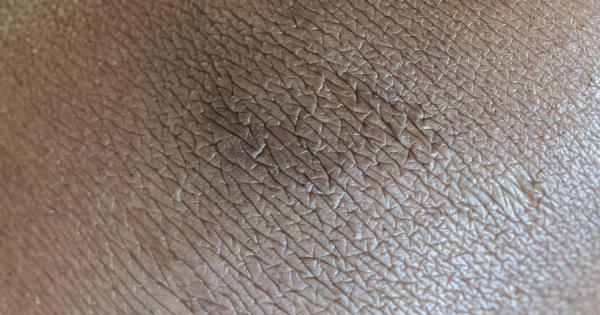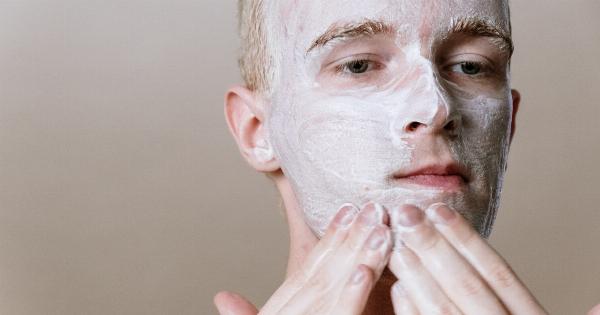Exfoliating is an essential step in any skincare routine. It helps remove dead skin cells, unclog pores, and promote cell turnover, resulting in smoother and brighter skin. However, it is vital to find the right balance when it comes to exfoliation.
Too much exfoliation can lead to irritation, dryness, and even damage to the skin barrier. On the other hand, not exfoliating enough may result in a buildup of dead skin cells and a dull complexion.
So, how many times a week should you exfoliate? Let’s delve into the factors that can influence the frequency and find out what works best for different skin types.
Skin Types and Exfoliation
Before determining how often you should exfoliate, it’s important to consider your skin type. Different skin types have varying levels of sensitivity and tolerance to exfoliation.
Here are a few common skin types and their recommended exfoliation frequencies:.
1. Normal Skin
If you have normal skin without any specific concerns, exfoliating two to three times a week should suffice. Regular exfoliation will help maintain your skin’s natural radiance.
2. Oily Skin
Oily skin tends to produce more sebum, leading to clogged pores and a dull appearance. Exfoliating three to four times a week can help reduce excess oil and prevent breakouts.
However, be cautious not to over-exfoliate, as it may strip your skin of essential moisture and cause rebound oiliness.
3. Dry Skin
Dry skin types usually have a compromised skin barrier, making them more susceptible to dehydration and sensitivity. It is advisable to exfoliate only once or twice a week to avoid further drying out the skin.
Look for gentle exfoliants that won’t aggravate dryness or cause irritation.
4. Combination Skin
If you have combination skin with oily areas in the T-zone and dryness in other areas, a balanced exfoliation routine is necessary. Exfoliating two to three times a week can help address clogged pores and promote a more even skin texture.
Sensitive Skin and Exfoliation
For those with sensitive skin, exfoliation can be challenging. It’s crucial to use gentle products and avoid harsh physical exfoliators that may cause micro-tears in the skin.
Chemical exfoliants like AHAs (Alpha Hydroxy Acids) and BHAs (Beta Hydroxy Acids) are generally more suitable for sensitive skin. Start with exfoliating once a week and observe how your skin reacts. If there is no redness or irritation, you can gradually increase the frequency to twice a week.
Factors to Consider
While understanding your skin type is essential, other factors can influence how often you should exfoliate. Consider the following factors when establishing your exfoliation routine:.
1. Product Strength
The strength or concentration of exfoliating products can vary. Some products may require less frequent use due to their potent formulas, while others may be formulated for daily use.
Always read and follow the instructions provided by the product manufacturer.
2. Environmental Factors
The environment you live in can impact your skin’s needs. If you reside in a particularly polluted area or experience high humidity levels, you may need to exfoliate more frequently to remove dirt, grime, and excess sebum.
Conversely, if you live in a dry climate, exfoliating too often may lead to increased dryness and sensitivity.
3. Skin Concerns
If you have specific skin concerns like acne, hyperpigmentation, or fine lines, you may benefit from more frequent exfoliation.
However, it’s important to consult with a dermatologist or skincare professional to determine the appropriate exfoliation routine for addressing your concerns.
Effects of Over-Exfoliation
While exfoliation is undoubtedly beneficial, overdoing it can have adverse effects on your skin. Over-exfoliation can compromise the skin barrier, leading to increased sensitivity, redness, dryness, and even breakouts.
Signs that you may be exfoliating too much include persistent flakiness, tightness, and a feeling of discomfort on your skin. If you experience any of these symptoms, it’s crucial to reduce the frequency of exfoliation or switch to milder exfoliants.
Conclusion
Exfoliating is an important step in any skincare routine, but finding the right balance is key. The ideal frequency of exfoliation varies depending on your skin type, sensitivity, and other factors like product strength and environment.
Remember, it’s always better to start with a lower frequency and gradually increase as your skin tolerates it. Pay attention to how your skin reacts and adjust your routine accordingly. If you’re unsure about the right exfoliation routine for your skin, consult with a dermatologist or skincare professional for personalized advice.






























